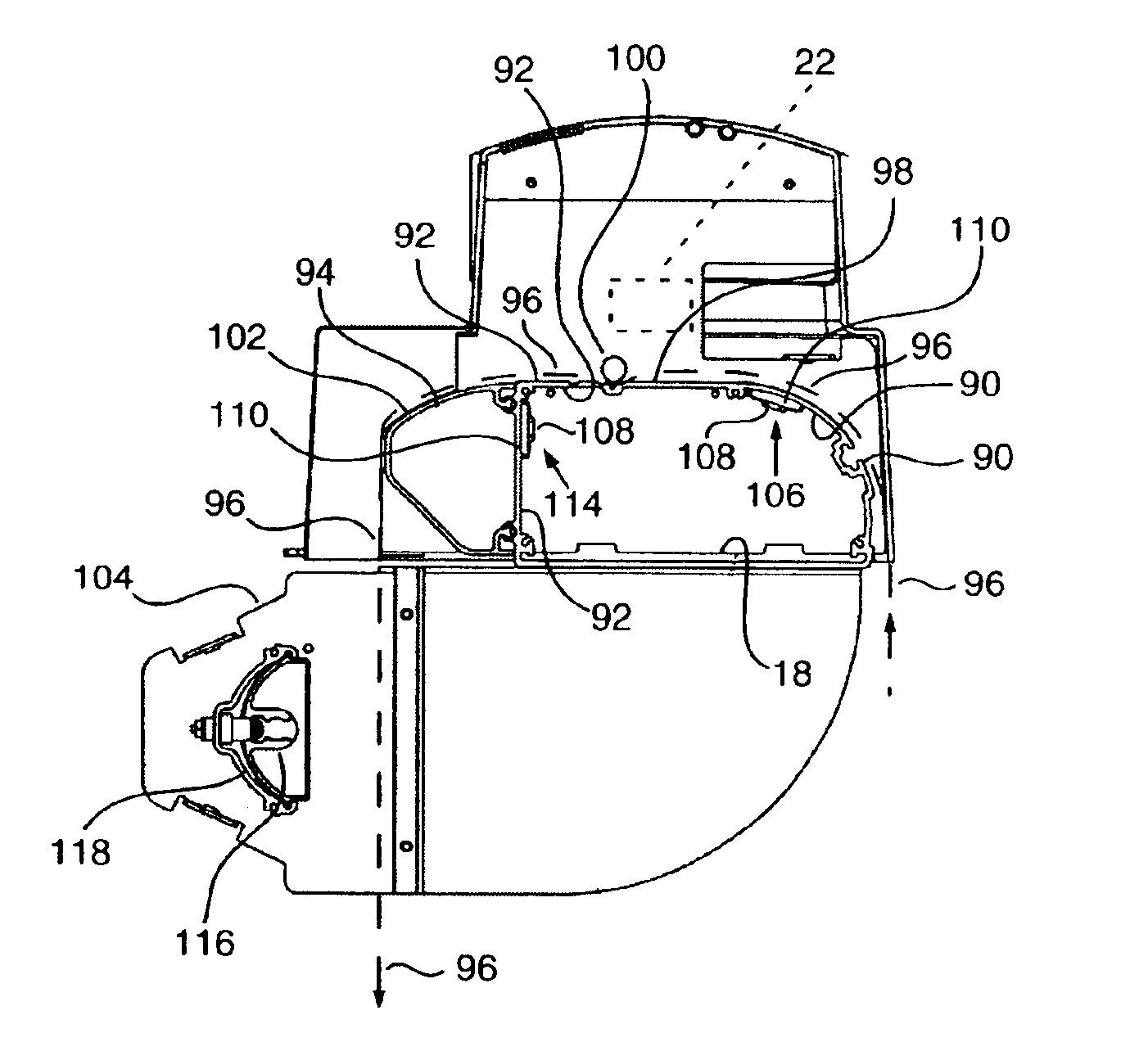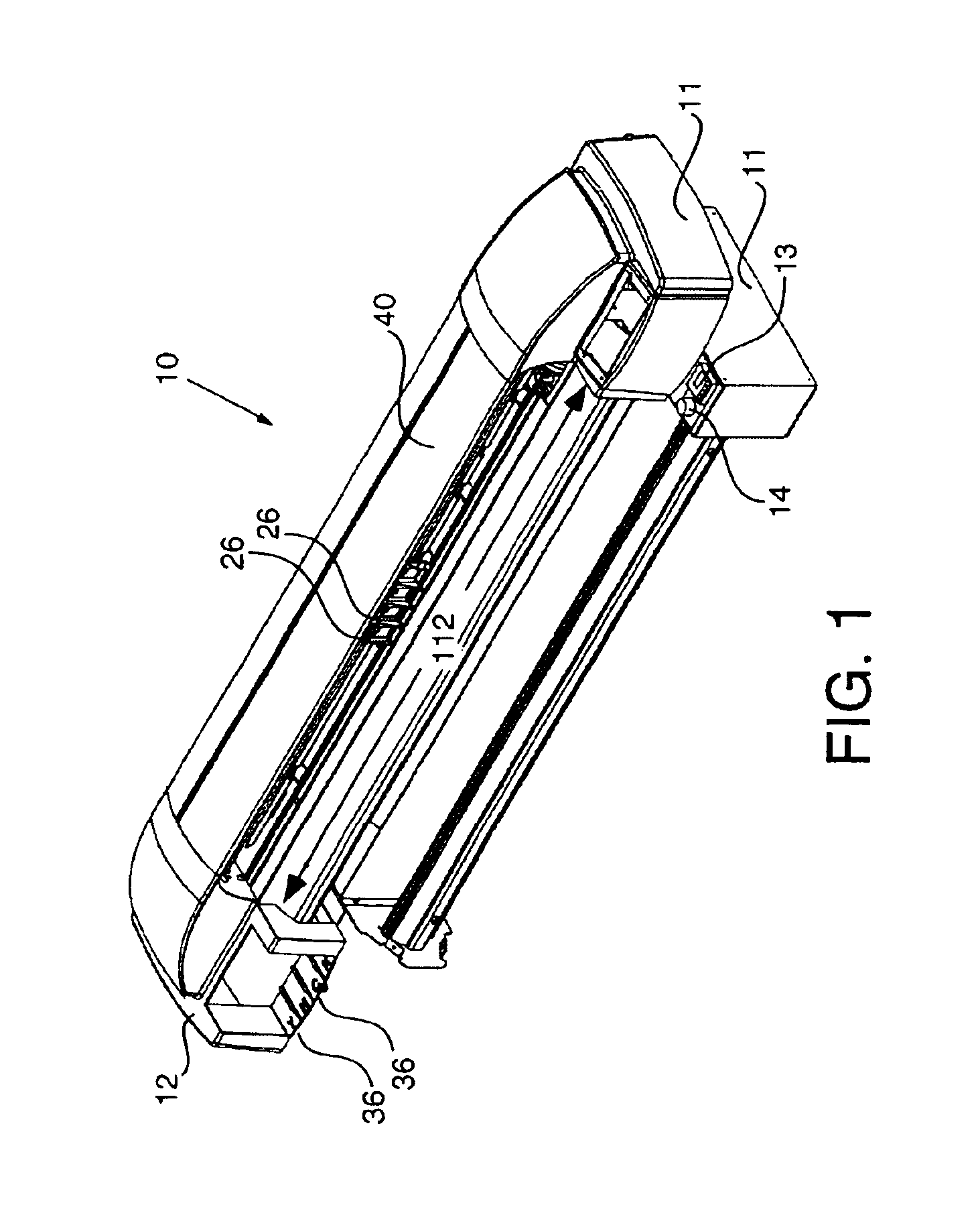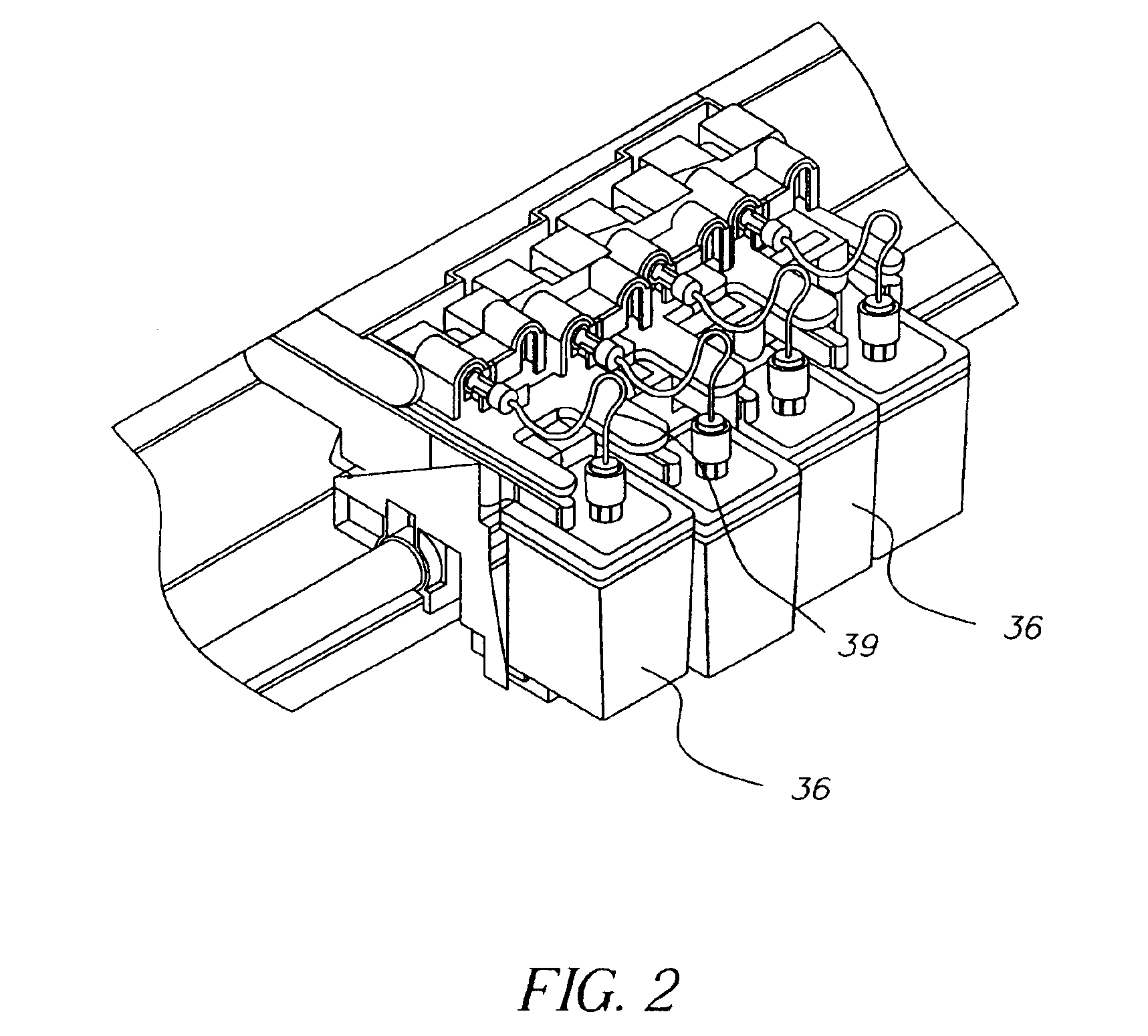Apparatus and method of inkjet printing on untreated hydrophobic media
- Summary
- Abstract
- Description
- Claims
- Application Information
AI Technical Summary
Benefits of technology
Problems solved by technology
Method used
Image
Examples
Embodiment Construction
[0024]The present description will be directed in particular to elements forming part of, or cooperating more directly with, apparatus in accordance with the present invention. It is to be understood that elements not specifically shown or described may take various forms well known to those skilled in the art.
[0025]Any surface of a material that is repellent to water is said to be hydrophobic. When water is applied to that surface, the water drops bead up and tend to separate from the surface it is in contact with. Examples of hydrophobic substrates are vinyl, polyolefins in general, and teflon. Additionally, as used herein, the term “redisperse itself” means that the polymeric binder within the ink, if it becomes partially solidified or skimmed within the bulk ink, will be liquefied when it comes in contact with the rest of the bulk ink and again becomes dispersed within the ink, for example when printing resumes. Hence, viscosity of the ink will not be adversely affected or chang...
PUM
| Property | Measurement | Unit |
|---|---|---|
| Temperature | aaaaa | aaaaa |
| Temperature | aaaaa | aaaaa |
| Temperature | aaaaa | aaaaa |
Abstract
Description
Claims
Application Information
 Login to View More
Login to View More - R&D
- Intellectual Property
- Life Sciences
- Materials
- Tech Scout
- Unparalleled Data Quality
- Higher Quality Content
- 60% Fewer Hallucinations
Browse by: Latest US Patents, China's latest patents, Technical Efficacy Thesaurus, Application Domain, Technology Topic, Popular Technical Reports.
© 2025 PatSnap. All rights reserved.Legal|Privacy policy|Modern Slavery Act Transparency Statement|Sitemap|About US| Contact US: help@patsnap.com



